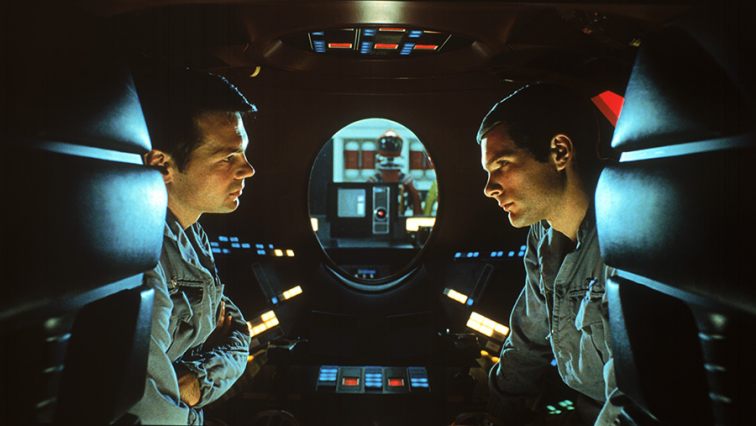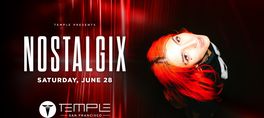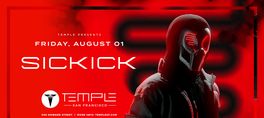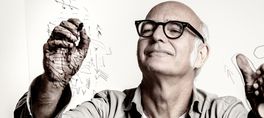Following this screening only, join Kishore Hari (@sciencequiche), Jeff Silverman (@J_M_Silverman) as we discuss the science of 2001: A Space Odyssey. How was Kubrick so accurate in his prediction of the future? Is evolution as simple as mixing in a Monolith or two? Was HAL really all that evil?
About Big Screen Science
Big Screen Science is a monthly series exploring the awesome science behind your favorite movies. We'll explore what's right, what's wrong, and why the scientist always seems to be the first one to die in so many films. Get ready for a way-too-deep dive into the science - from the physics of spaceflight to the biology of vampires and everything in between. No movie is off limits - cult faves, Hollywood blockbusters, hidden gems. Look for surprise guest scientists and embarrassing science-themed costumes. Hosted by science communicator Kishore Hari and astrophysicist Jeff Silverman. Making movies better with science!
Feast your eyes on a brand new restoration! This 70mm print was struck from new printing elements made from the original camera negative.
Be prepared. This all might sound like hyperbolic gushing, but you can’t overstate when you talk about 2001: A SPACE ODYSSEY. It's a film that transforms the thematic language and technological possibilities of the medium. It's about no less than man’s emergence and place in the universe. It also houses arguably the greatest special effects of all-time. It’s ambitious, big, bold and awe-inspiring. It's an experience that demands to be seen on the big screen.
In 1968 Arthur C. Clarke and Stanley Kubrick collaborated to tell the story of 2001. What they created was a philosophical sci-fi journey. The two wrote the screenplay. Clarke modified it for his book of the same name as Kubrick was making his film.
Kubrick’s aim was not only to expand the language of film with this story, but to test the limits of special effects in cinema. Using space footage and advisors from NASA Kubrick and his SFX team used a combination of trick photography, conventional sets and visual effects to create the greatest, most striking images audiences had ever seen. In fact 50 years later they have rarely been matched.
Kubrick, a known perfectionist, held this project in such personal esteem that he wasn’t finished cutting it until minutes before it premiered. The result was worth all the sweat. Kubrick and company had made a film that truly changed cinema. Its visual language was unlike anything ever seen before. Its story, centered around theme and tone more than plot and character, deliberately paces across the screen with an obvious sense of purpose.
From the dawn of man on earth to the near future in space to uncharted territory 2001 hypnotizes you with its confidence. By the time its infamous psychedelic wormhole sequence begins, it overtakes your senses. You have no choice but to give yourself over to it.
There have been great, important, influential films, but no one piece of cinema has done so much for movies as 2001: A SPACE ODYSSEY.
Now experience Kubrick's ambitious, mind-blowing sci-fi epic in big, bold 70mm. It's unlike anything you will ever see.
show less
About Big Screen Science
Big Screen Science is a monthly series exploring the awesome science behind your favorite movies. We'll explore what's right, what's wrong, and why the scientist always seems to be the first one to die in so many films. Get ready for a way-too-deep dive into the science - from the physics of spaceflight to the biology of vampires and everything in between. No movie is off limits - cult faves, Hollywood blockbusters, hidden gems. Look for surprise guest scientists and embarrassing science-themed costumes. Hosted by science communicator Kishore Hari and astrophysicist Jeff Silverman. Making movies better with science!
Feast your eyes on a brand new restoration! This 70mm print was struck from new printing elements made from the original camera negative.
Be prepared. This all might sound like hyperbolic gushing, but you can’t overstate when you talk about 2001: A SPACE ODYSSEY. It's a film that transforms the thematic language and technological possibilities of the medium. It's about no less than man’s emergence and place in the universe. It also houses arguably the greatest special effects of all-time. It’s ambitious, big, bold and awe-inspiring. It's an experience that demands to be seen on the big screen.
In 1968 Arthur C. Clarke and Stanley Kubrick collaborated to tell the story of 2001. What they created was a philosophical sci-fi journey. The two wrote the screenplay. Clarke modified it for his book of the same name as Kubrick was making his film.
Kubrick’s aim was not only to expand the language of film with this story, but to test the limits of special effects in cinema. Using space footage and advisors from NASA Kubrick and his SFX team used a combination of trick photography, conventional sets and visual effects to create the greatest, most striking images audiences had ever seen. In fact 50 years later they have rarely been matched.
Kubrick, a known perfectionist, held this project in such personal esteem that he wasn’t finished cutting it until minutes before it premiered. The result was worth all the sweat. Kubrick and company had made a film that truly changed cinema. Its visual language was unlike anything ever seen before. Its story, centered around theme and tone more than plot and character, deliberately paces across the screen with an obvious sense of purpose.
From the dawn of man on earth to the near future in space to uncharted territory 2001 hypnotizes you with its confidence. By the time its infamous psychedelic wormhole sequence begins, it overtakes your senses. You have no choice but to give yourself over to it.
There have been great, important, influential films, but no one piece of cinema has done so much for movies as 2001: A SPACE ODYSSEY.
Now experience Kubrick's ambitious, mind-blowing sci-fi epic in big, bold 70mm. It's unlike anything you will ever see.
Following this screening only, join Kishore Hari (@sciencequiche), Jeff Silverman (@J_M_Silverman) as we discuss the science of 2001: A Space Odyssey. How was Kubrick so accurate in his prediction of the future? Is evolution as simple as mixing in a Monolith or two? Was HAL really all that evil?
About Big Screen Science
Big Screen Science is a monthly series exploring the awesome science behind your favorite movies. We'll explore what's right, what's wrong, and why the scientist always seems to be the first one to die in so many films. Get ready for a way-too-deep dive into the science - from the physics of spaceflight to the biology of vampires and everything in between. No movie is off limits - cult faves, Hollywood blockbusters, hidden gems. Look for surprise guest scientists and embarrassing science-themed costumes. Hosted by science communicator Kishore Hari and astrophysicist Jeff Silverman. Making movies better with science!
Feast your eyes on a brand new restoration! This 70mm print was struck from new printing elements made from the original camera negative.
Be prepared. This all might sound like hyperbolic gushing, but you can’t overstate when you talk about 2001: A SPACE ODYSSEY. It's a film that transforms the thematic language and technological possibilities of the medium. It's about no less than man’s emergence and place in the universe. It also houses arguably the greatest special effects of all-time. It’s ambitious, big, bold and awe-inspiring. It's an experience that demands to be seen on the big screen.
In 1968 Arthur C. Clarke and Stanley Kubrick collaborated to tell the story of 2001. What they created was a philosophical sci-fi journey. The two wrote the screenplay. Clarke modified it for his book of the same name as Kubrick was making his film.
Kubrick’s aim was not only to expand the language of film with this story, but to test the limits of special effects in cinema. Using space footage and advisors from NASA Kubrick and his SFX team used a combination of trick photography, conventional sets and visual effects to create the greatest, most striking images audiences had ever seen. In fact 50 years later they have rarely been matched.
Kubrick, a known perfectionist, held this project in such personal esteem that he wasn’t finished cutting it until minutes before it premiered. The result was worth all the sweat. Kubrick and company had made a film that truly changed cinema. Its visual language was unlike anything ever seen before. Its story, centered around theme and tone more than plot and character, deliberately paces across the screen with an obvious sense of purpose.
From the dawn of man on earth to the near future in space to uncharted territory 2001 hypnotizes you with its confidence. By the time its infamous psychedelic wormhole sequence begins, it overtakes your senses. You have no choice but to give yourself over to it.
There have been great, important, influential films, but no one piece of cinema has done so much for movies as 2001: A SPACE ODYSSEY.
Now experience Kubrick's ambitious, mind-blowing sci-fi epic in big, bold 70mm. It's unlike anything you will ever see.
read more
About Big Screen Science
Big Screen Science is a monthly series exploring the awesome science behind your favorite movies. We'll explore what's right, what's wrong, and why the scientist always seems to be the first one to die in so many films. Get ready for a way-too-deep dive into the science - from the physics of spaceflight to the biology of vampires and everything in between. No movie is off limits - cult faves, Hollywood blockbusters, hidden gems. Look for surprise guest scientists and embarrassing science-themed costumes. Hosted by science communicator Kishore Hari and astrophysicist Jeff Silverman. Making movies better with science!
Feast your eyes on a brand new restoration! This 70mm print was struck from new printing elements made from the original camera negative.
Be prepared. This all might sound like hyperbolic gushing, but you can’t overstate when you talk about 2001: A SPACE ODYSSEY. It's a film that transforms the thematic language and technological possibilities of the medium. It's about no less than man’s emergence and place in the universe. It also houses arguably the greatest special effects of all-time. It’s ambitious, big, bold and awe-inspiring. It's an experience that demands to be seen on the big screen.
In 1968 Arthur C. Clarke and Stanley Kubrick collaborated to tell the story of 2001. What they created was a philosophical sci-fi journey. The two wrote the screenplay. Clarke modified it for his book of the same name as Kubrick was making his film.
Kubrick’s aim was not only to expand the language of film with this story, but to test the limits of special effects in cinema. Using space footage and advisors from NASA Kubrick and his SFX team used a combination of trick photography, conventional sets and visual effects to create the greatest, most striking images audiences had ever seen. In fact 50 years later they have rarely been matched.
Kubrick, a known perfectionist, held this project in such personal esteem that he wasn’t finished cutting it until minutes before it premiered. The result was worth all the sweat. Kubrick and company had made a film that truly changed cinema. Its visual language was unlike anything ever seen before. Its story, centered around theme and tone more than plot and character, deliberately paces across the screen with an obvious sense of purpose.
From the dawn of man on earth to the near future in space to uncharted territory 2001 hypnotizes you with its confidence. By the time its infamous psychedelic wormhole sequence begins, it overtakes your senses. You have no choice but to give yourself over to it.
There have been great, important, influential films, but no one piece of cinema has done so much for movies as 2001: A SPACE ODYSSEY.
Now experience Kubrick's ambitious, mind-blowing sci-fi epic in big, bold 70mm. It's unlike anything you will ever see.
show less
Date/Times:
2550 Mission Street, San Francisco, CA 94103
The Best Events
Every Week in Your Inbox
From Our Sponsors
UPCOMING EVENTS
Great suggestion! We'll be in touch.
Event reviewed successfully.









